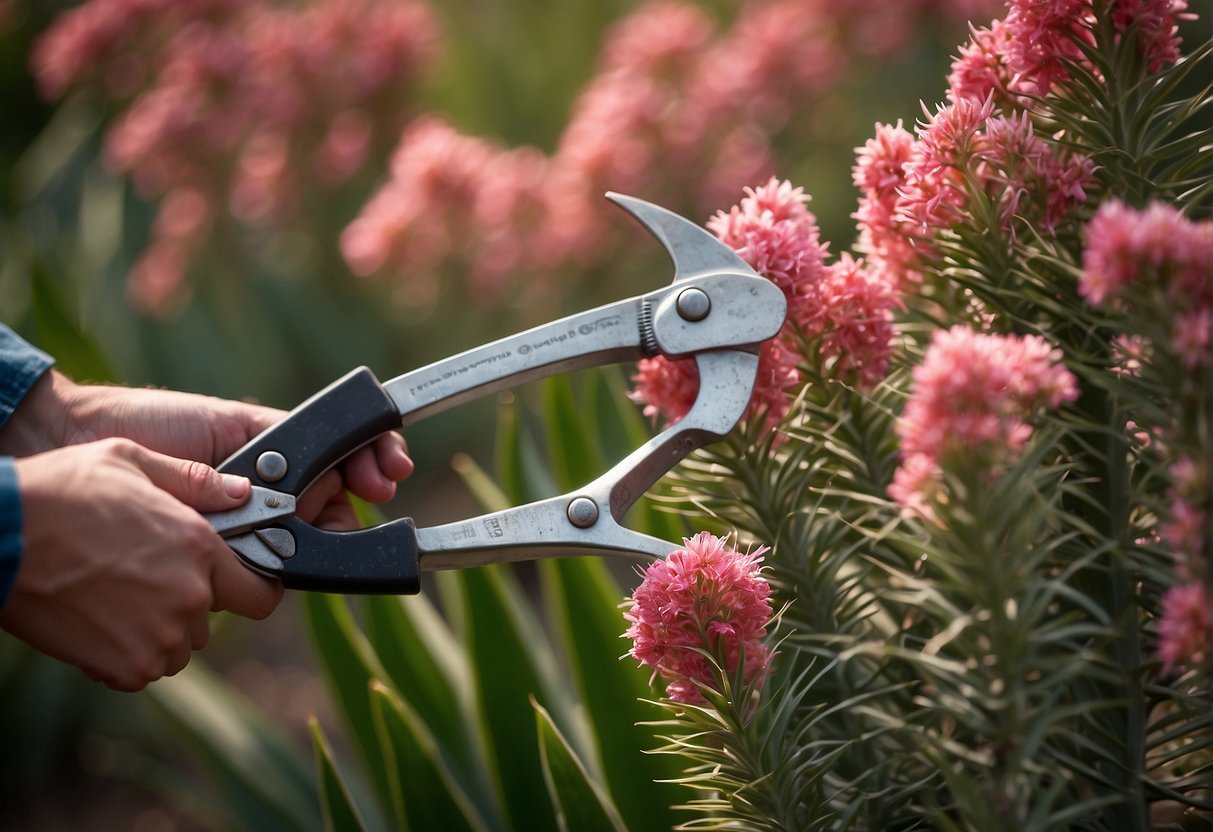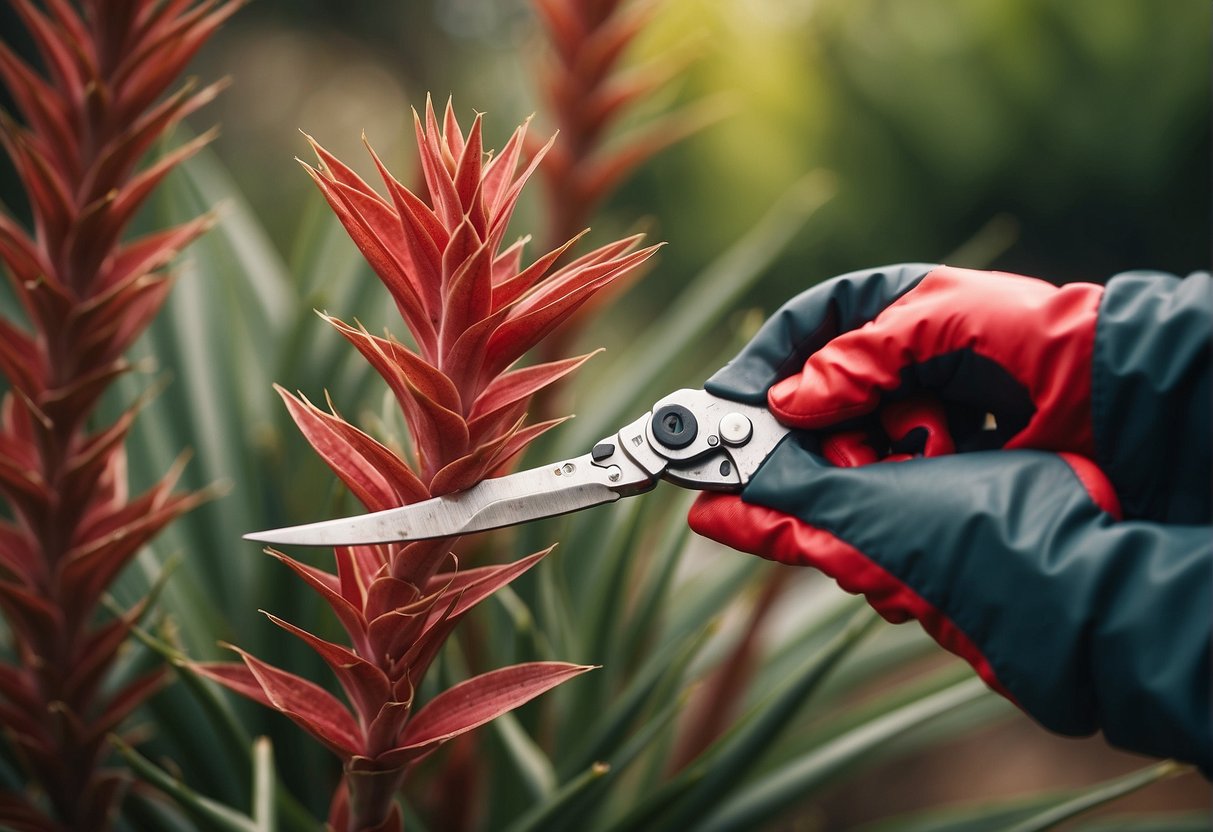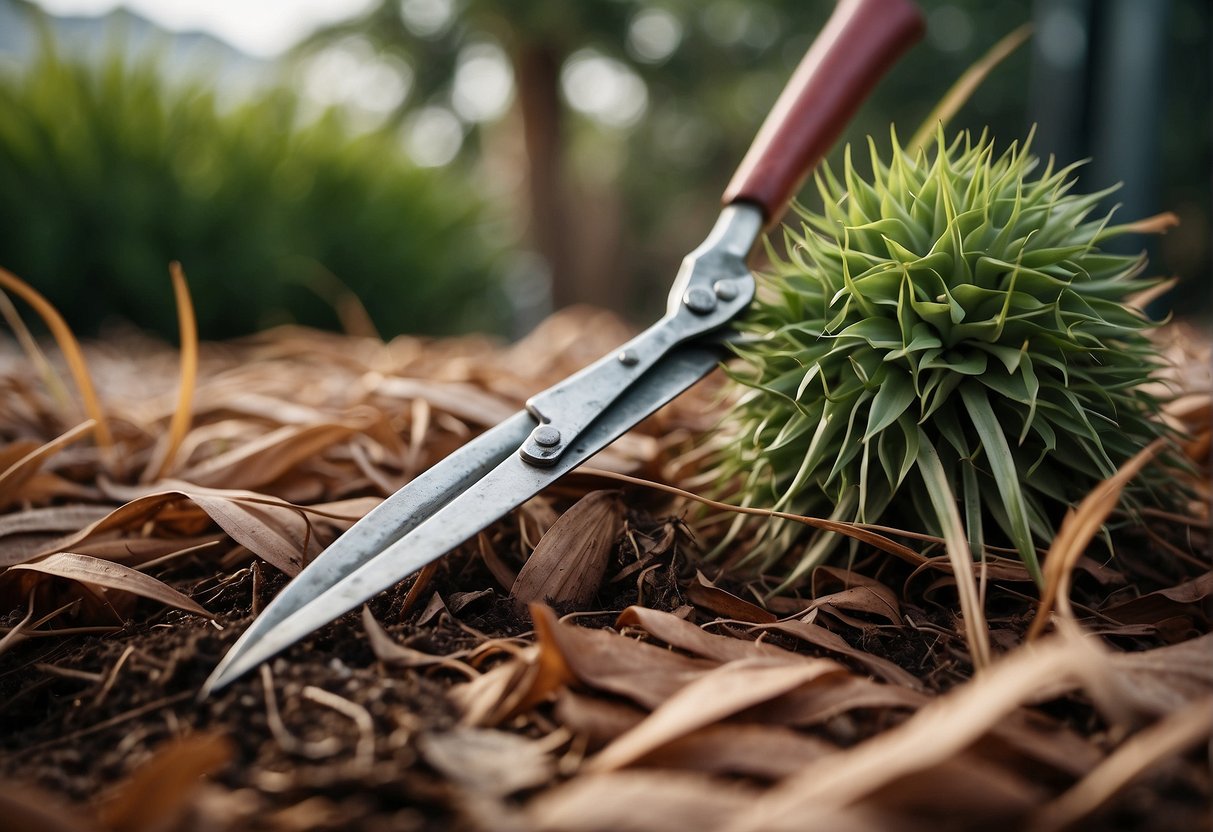How to Prune Red Yucca Plants: A Clear and Confident Guide
For those who’ve adorned their gardens with a red yucca plant, its beauty is unmistakable—characterized by its lofty, slender stems and bright red blossoms. However, to maintain its health and prime appearance, pruning stands as a crucial routine in red yucca plant maintenance. Through pruning, you can stimulate new growth, clear away dead or harmed leaves, and help the plant generate an abundance of flowers.

Before you start pruning your red yucca plant, it’s important to understand the basics of yucca plant care. Yuccas are hardy plants that can tolerate a range of growing conditions, but they thrive in well-draining soil and full sun. They also don’t require much water, so be careful not to overwater your plant. Understanding these basics will help ensure that your red yucca plant stays healthy and strong.
When it comes to pruning your red yucca plant, there are a few tools and techniques you’ll need to know. In this article, we’ll walk you through the step-by-step process of pruning your plant, from identifying which stalks to cut to properly disposing of the debris. We’ll also cover post-pruning care and propagation, so you can keep your red yucca plant looking its best for years to come.
Understanding Red Yucca Plant Care
If you are planning to grow a red yucca plant, it is important to understand the optimal growing conditions and common pests and diseases to ensure its proper care. Here are some tips to help you maintain a healthy and thriving red yucca plant.
Optimal Growing Conditions
Red yucca plants are drought-hardy plants that thrive in full sun. They are native to the Chihuahuan desert, so they do well in hot, dry climates. When planting your red yucca, make sure to choose a location that receives at least six hours of direct sunlight each day.
Watering is crucial for the growth of red yucca plants. During the growing season, water your plant once a week. In the winter, reduce watering to once a month. Overwatering can lead to root rot, so make sure to let the soil dry out between waterings.
Fertilizer is not necessary for red yucca plants, but you can use a slow-release fertilizer once a year to promote growth.
Common Pests and Diseases
Red yucca plants are relatively pest and disease resistant, but they can still fall victim to a few common issues. Spider mites and aphids can infest your plant, causing yellowing leaves and stunted growth. To control these pests, use a natural insecticide or spray your plant with water to knock them off.
Fungal diseases can also affect red yucca plants. Leaf spot and root rot are common issues that can be caused by overwatering or poor drainage. To prevent these diseases, make sure to plant your red yucca in well-draining soil and avoid overwatering.
In conclusion, red yucca plant care is relatively easy as long as you provide it with the optimal growing conditions and keep an eye out for common pests and diseases. With proper care, your red yucca plant will thrive both indoors and outdoors.
Pruning Techniques and Tools

Proper Use of Pruning Shears
When it comes to pruning red yucca plants, using the right tools is crucial. One of the most important tools you will need is a pair of pruning shears. These shears are designed to make clean cuts without damaging the plant.
To use pruning shears properly, start by selecting a pair that is comfortable to hold and easy to use. When pruning, hold the shears at a slight angle and make a clean cut just above the node or bud. Avoid cutting too close to the stem, as this can damage the plant.
Safety Measures for Pruning
Pruning can be a dangerous activity if proper safety measures are not taken. Before you start pruning your red yucca plant, make sure you have the right protective gear. This includes gloves, safety glasses, and a sharp knife or pruning saw.
When using pruning shears, be sure to keep your fingers away from the blades. Always cut away from your body and avoid using the shears to cut anything other than plant material. If you need to reach high branches, use a ladder or step stool and have someone hold it steady for you.
By following these pruning techniques and using the right tools, you can keep your red yucca plant healthy and looking its best. Remember to always prioritize safety and take the necessary precautions before starting any pruning or trimming activity.
Step-by-Step Pruning Guide

Pruning your red yucca plant is an essential part of maintaining its health and appearance. Follow these step-by-step instructions to keep your plant in top shape.
When to Prune
The best time to prune your red yucca plant is in early spring, just before new growth begins. This allows you to assess the plant’s health and remove any dead or damaged foliage before it starts to rot. Additionally, pruning at this time can encourage blooming and help manage the plant’s structure.
How to Trim Dead and Damaged Foliage
When pruning your red yucca plant, start by assessing the overall health of the plant. Look for any dead or damaged leaves and remove them using a pair of sharp, clean pruning shears. Be sure to cut the leaves as close to the base as possible without damaging the plant’s stem.
Maintaining Plant Structure
To maintain the structure of your red yucca plant, remove any flower stalks after they have finished blooming. This will encourage the plant to regrow and help keep it looking neat and manageable. Additionally, if your plant has become overgrown or misshapen, you can rejuvenate it by cutting back the stems to about 6 inches above the ground. This will encourage new growth and help you manage the plant’s appearance.
By following these simple steps, you can keep your red yucca plant looking healthy and beautiful year-round. Remember to always assess the plant’s health before pruning and use clean, sharp tools to avoid damaging the plant. With a little effort, your red yucca plant will thrive and bring you joy for years to come.
Post-Pruning Care and Propagation
After pruning your red yucca plant, it is essential to provide proper care to ensure healthy growth. Here are some aftercare tips that you should follow:
Aftercare for Healthy Growth
- Watering: Water the plant deeply and regularly, especially during the growth period, to promote healthy root development.
- Fertilizing: Apply a balanced fertilizer every two to three months to provide essential nutrients for growth.
- Composting: Add compost to the soil around the plant to improve soil fertility and moisture retention.
- Sunlight: Ensure that the plant is getting enough sunlight to encourage healthy growth.
Propagating New Red Yucca Plants
If you want to propagate your red yucca plant, you can do so by using offsets or cuttings. Here are some tips for propagating the plant:
- Offsets: Look for offsets growing at the base of the plant and gently remove them. Plant them in a well-draining soil mix and keep them moist until they establish roots.
- Cuttings: Take a stem cutting from the plant and let it dry for a day or two. Plant it in a well-draining soil mix and keep it moist until it establishes roots.
To ensure successful propagation, it is essential to provide proper care to the new plants. Follow the aftercare tips mentioned above to promote healthy growth.
In summary, pruning a yucca plant is an essential part of yucca plant care. After pruning, providing proper aftercare is crucial for healthy growth. If you want to propagate the plant, you can use offsets or cuttings, but ensure that you provide proper care to the new plants. With these gardening tips, you can keep your red yucca plant healthy and thriving.
Frequently Asked Questions
What is the proper technique for pruning red yucca plants after blooming?
To prune a red yucca plant after blooming, you should remove the entire flower stalk at its base. You can also remove any dead or damaged leaves by cutting them off at their base. Be sure to use clean and sharp pruning shears to prevent any damage to the plant.
When is the best time to prune a red yucca plant?
The best time to prune a red yucca plant is in the late winter or early spring before new growth appears. This will allow the plant to recover and grow new leaves and blooms during the growing season.
Can you prune a red yucca to encourage more blooms?
Yes, you can prune a red yucca plant to encourage more blooms. After the initial flowering, you can cut back the flower stalk to encourage the plant to produce more blooms. However, be careful not to prune too much, as this can stunt the plant’s growth.
How do you maintain the health of a red yucca during the winter months?
During the winter months, it is important to protect the red yucca plant from freezing temperatures and excess moisture. You can cover the plant with a frost cloth or move it to a protected location. Be sure to avoid overwatering the plant during this time, as this can lead to root rot.
What are the signs that a red yucca needs to be divided, and how is it done?
Signs that a red yucca plant needs to be divided include overcrowding, reduced blooming, and yellowing leaves. To divide the plant, carefully dig it up and separate the root ball into smaller sections. Be sure to plant each section in well-draining soil and water thoroughly.
How often should you water a red yucca plant after pruning?
After pruning, you should water a red yucca plant deeply once a week. Be sure to allow the soil to dry out slightly between waterings to prevent overwatering.


